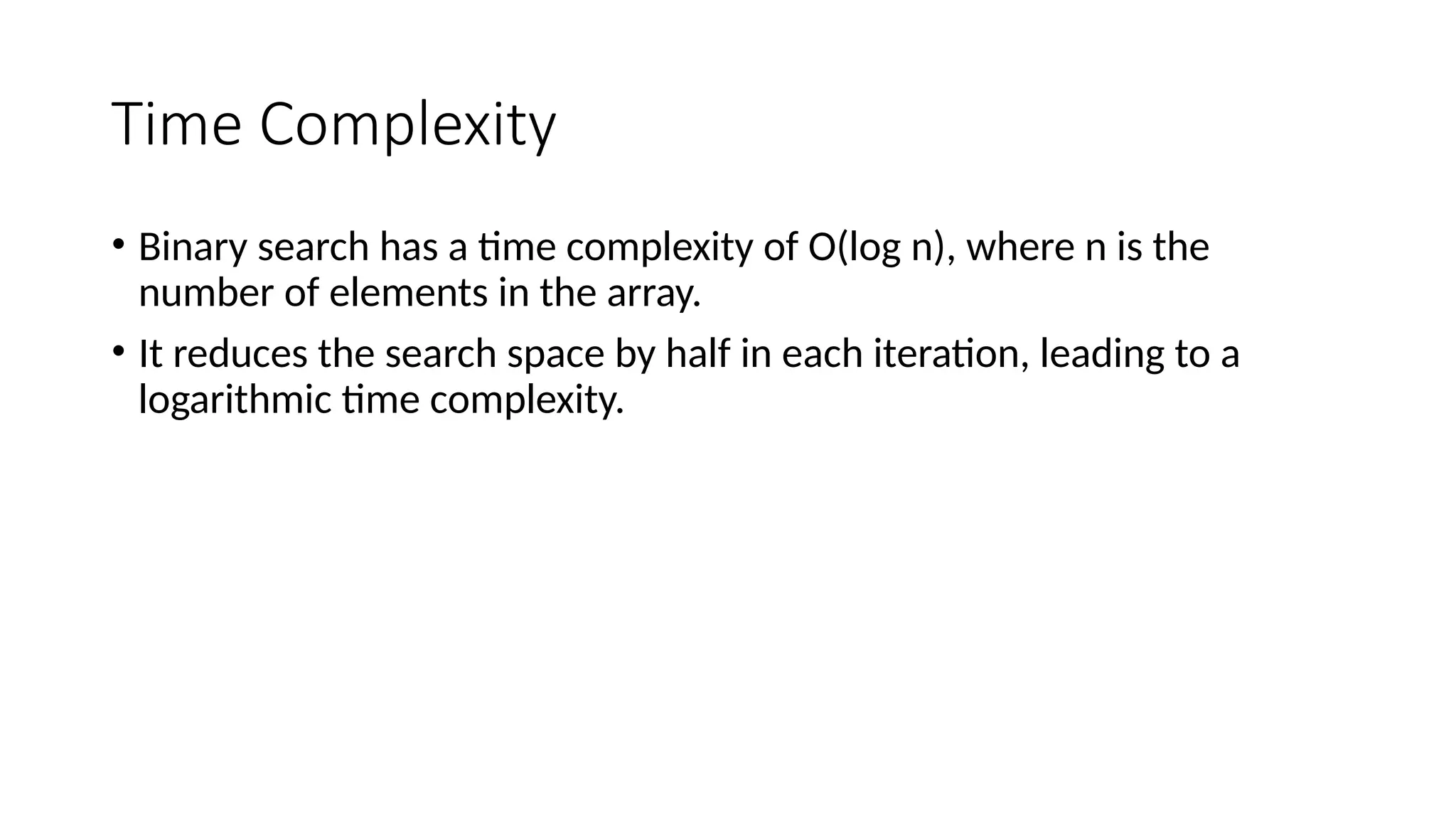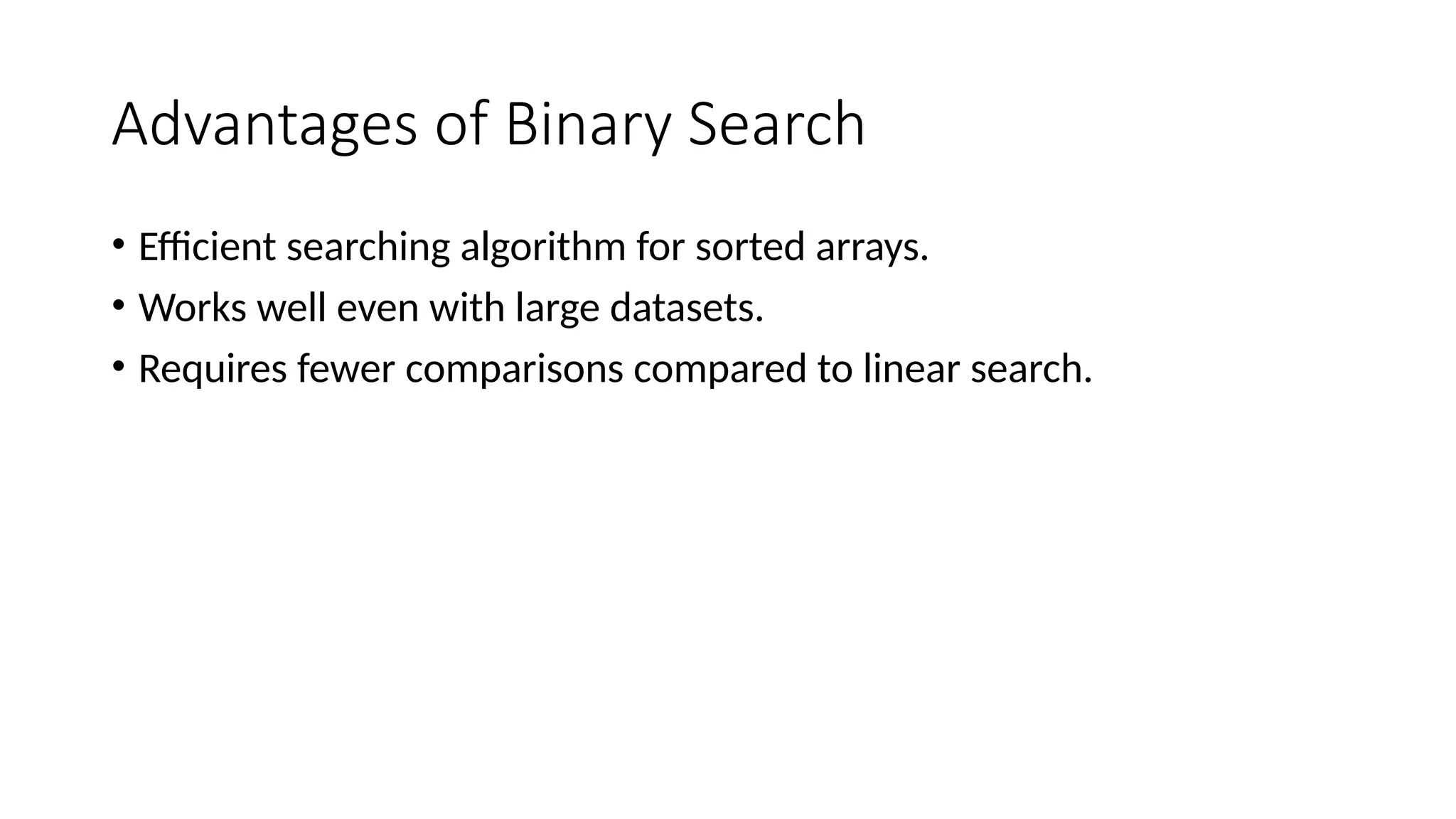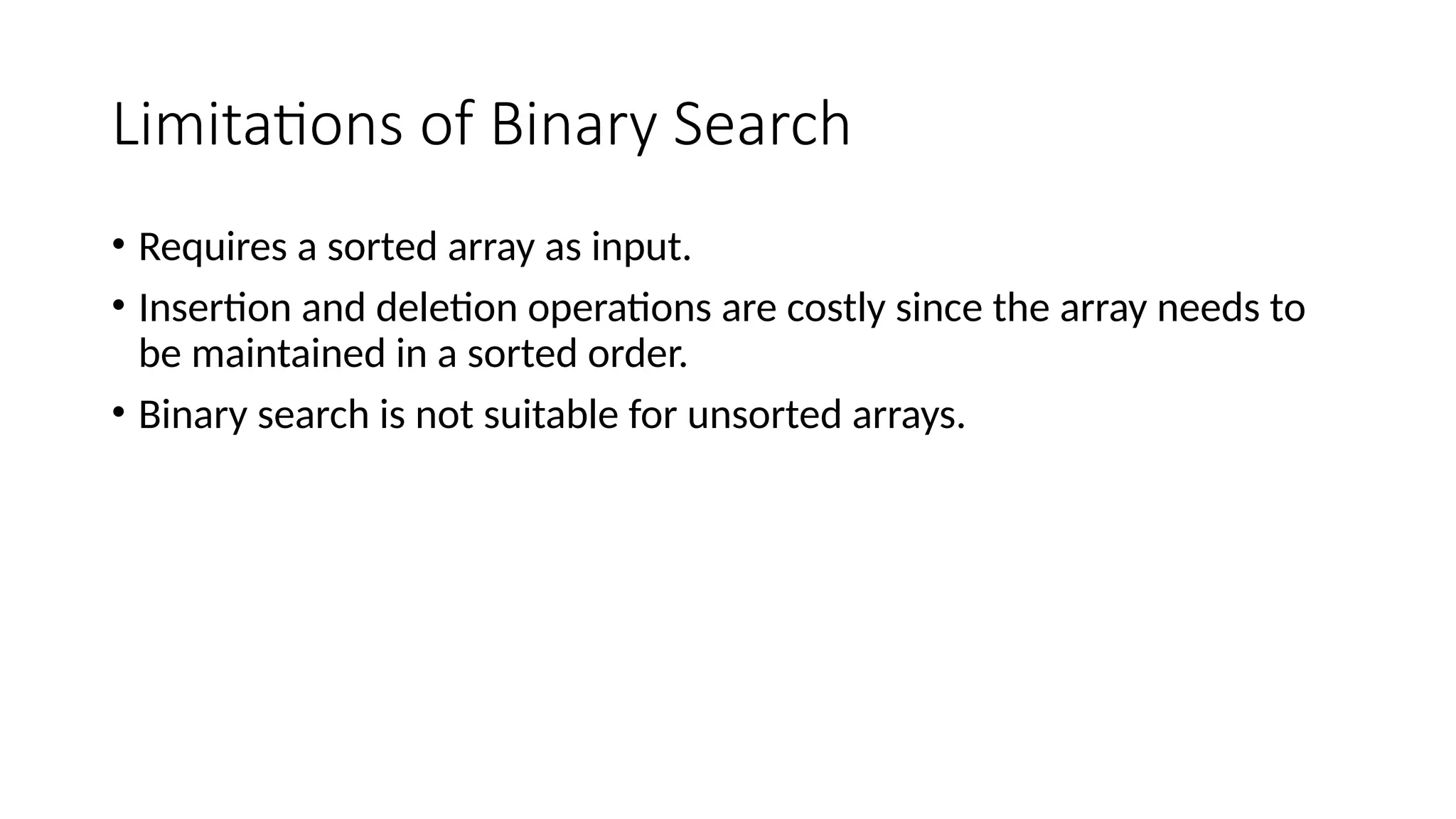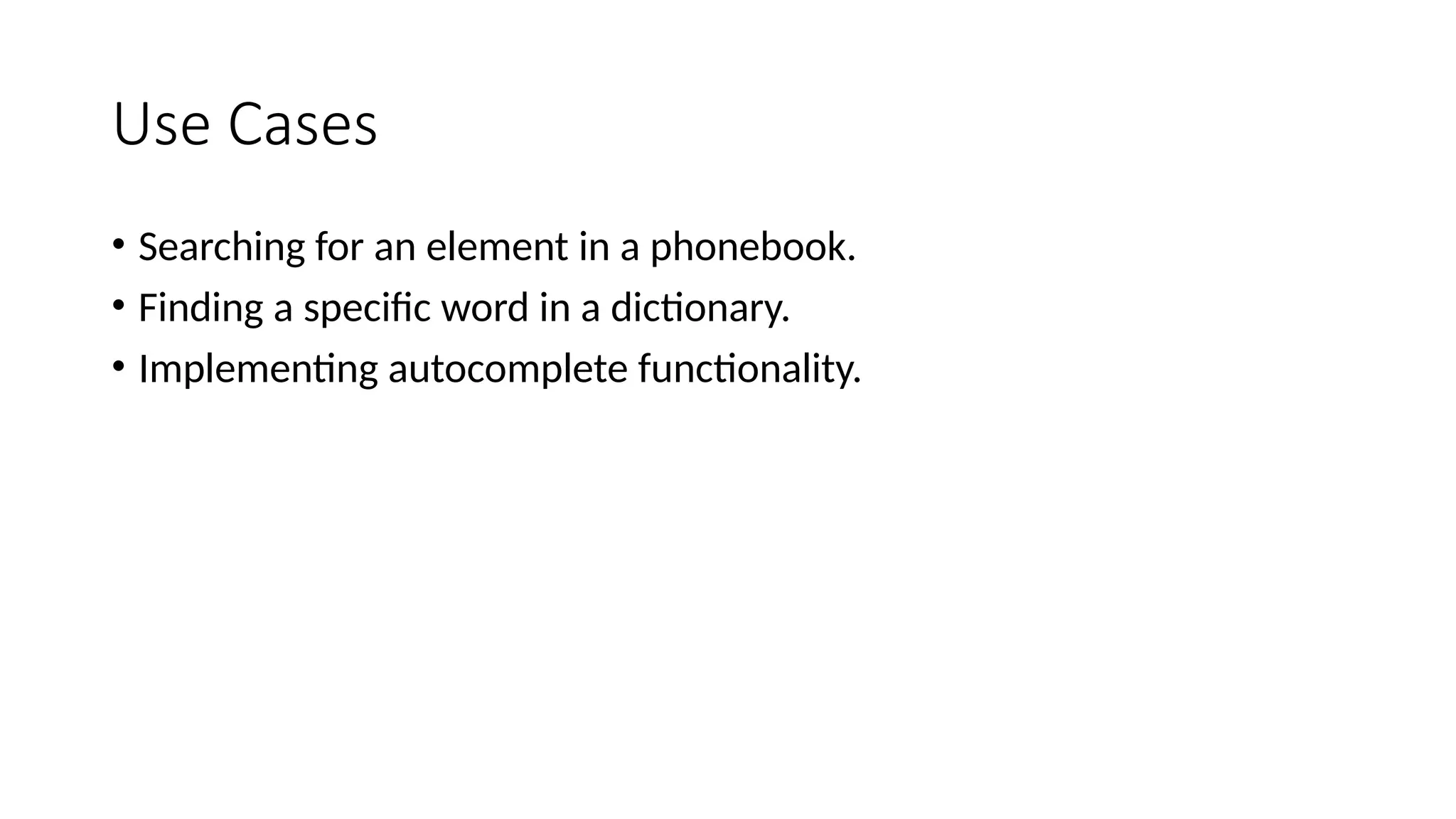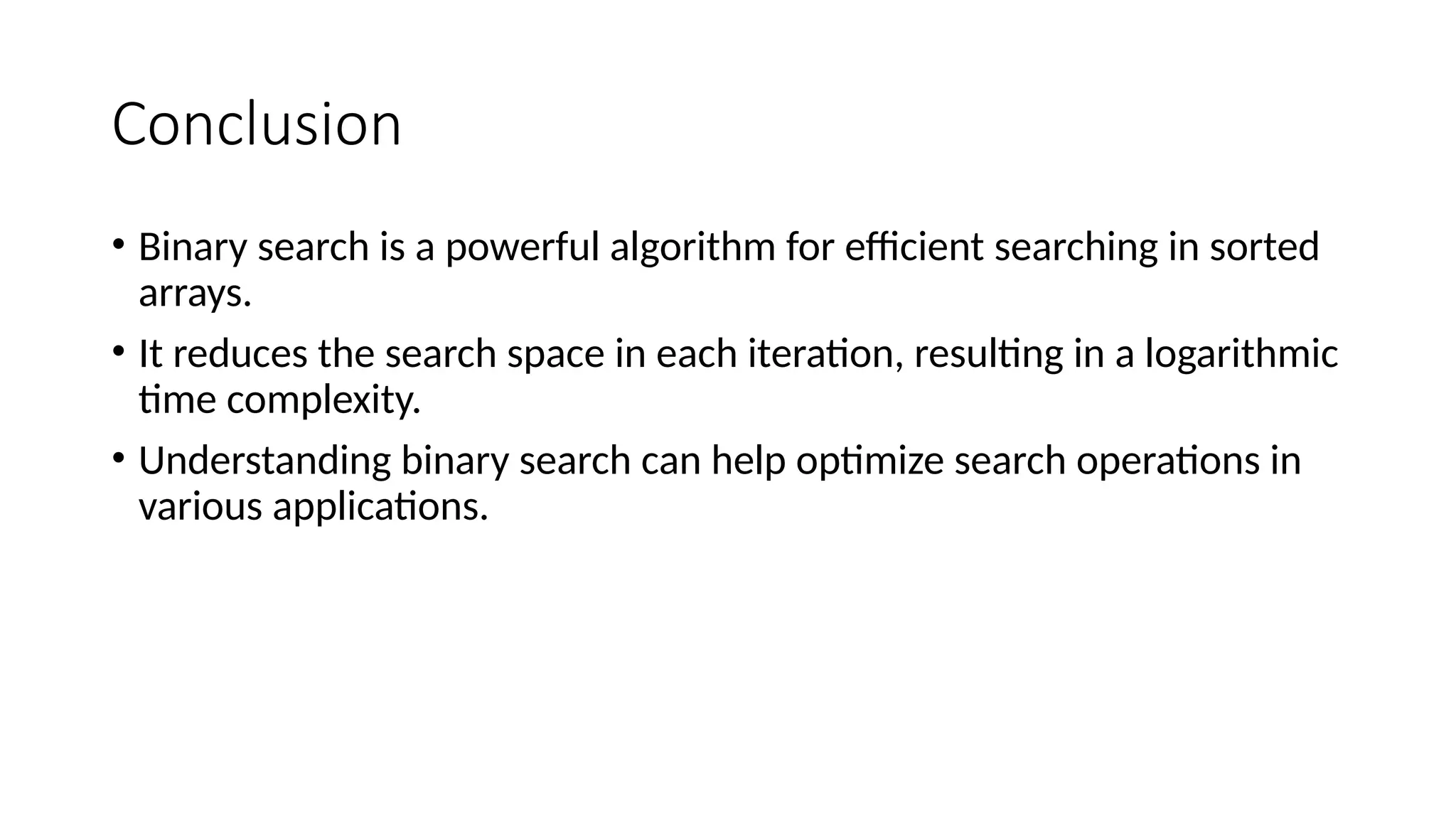Binary search is a divide-and-conquer algorithm designed for efficiently locating a target value within a sorted array by halving the search range at each step until the value is found or the search space is exhausted. It can be implemented through both iterative and recursive methods, boasting a time complexity of O(log n). While effective for large datasets, binary search requires a sorted array and incurs high costs for insertion and deletion operations.
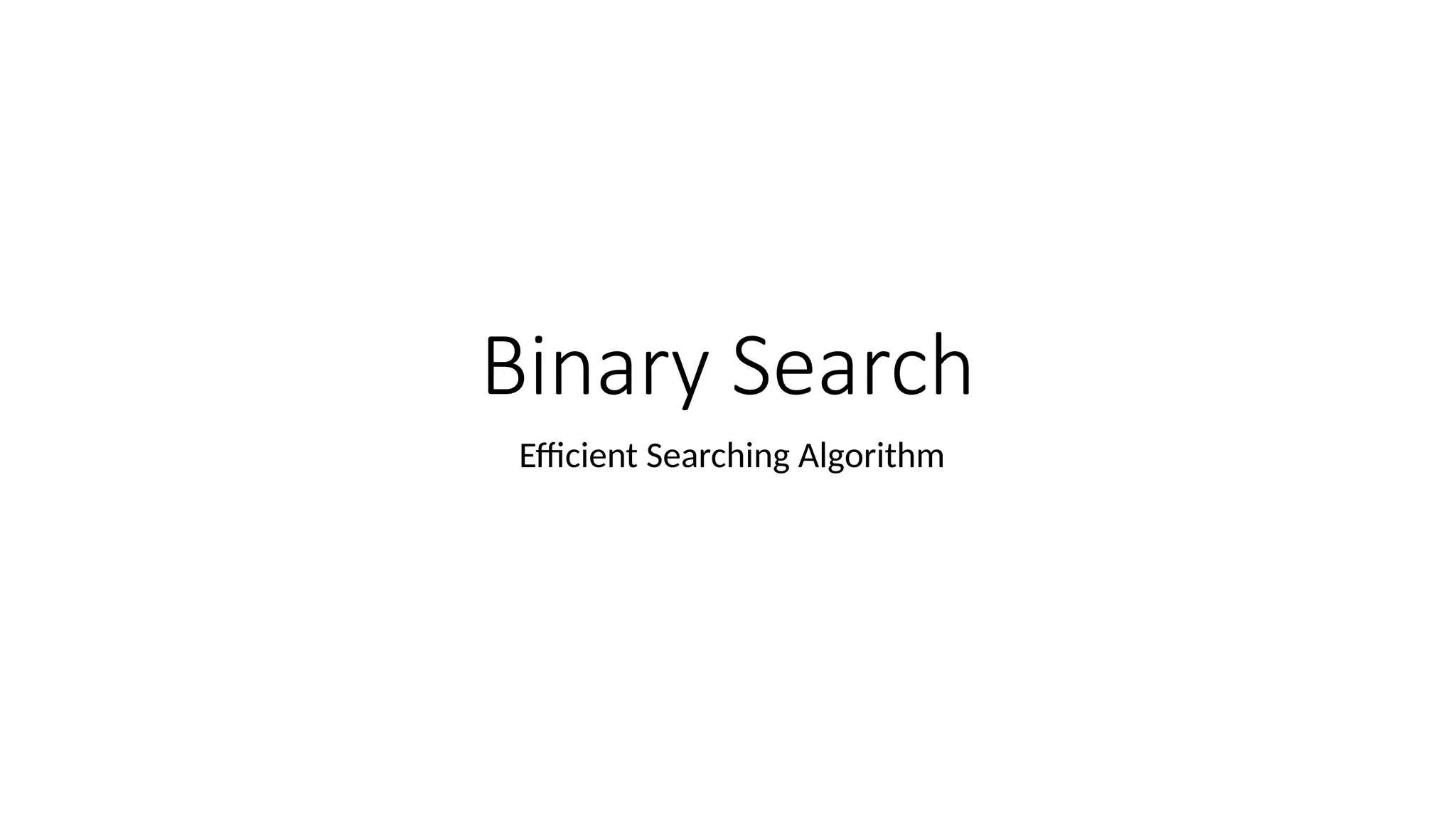
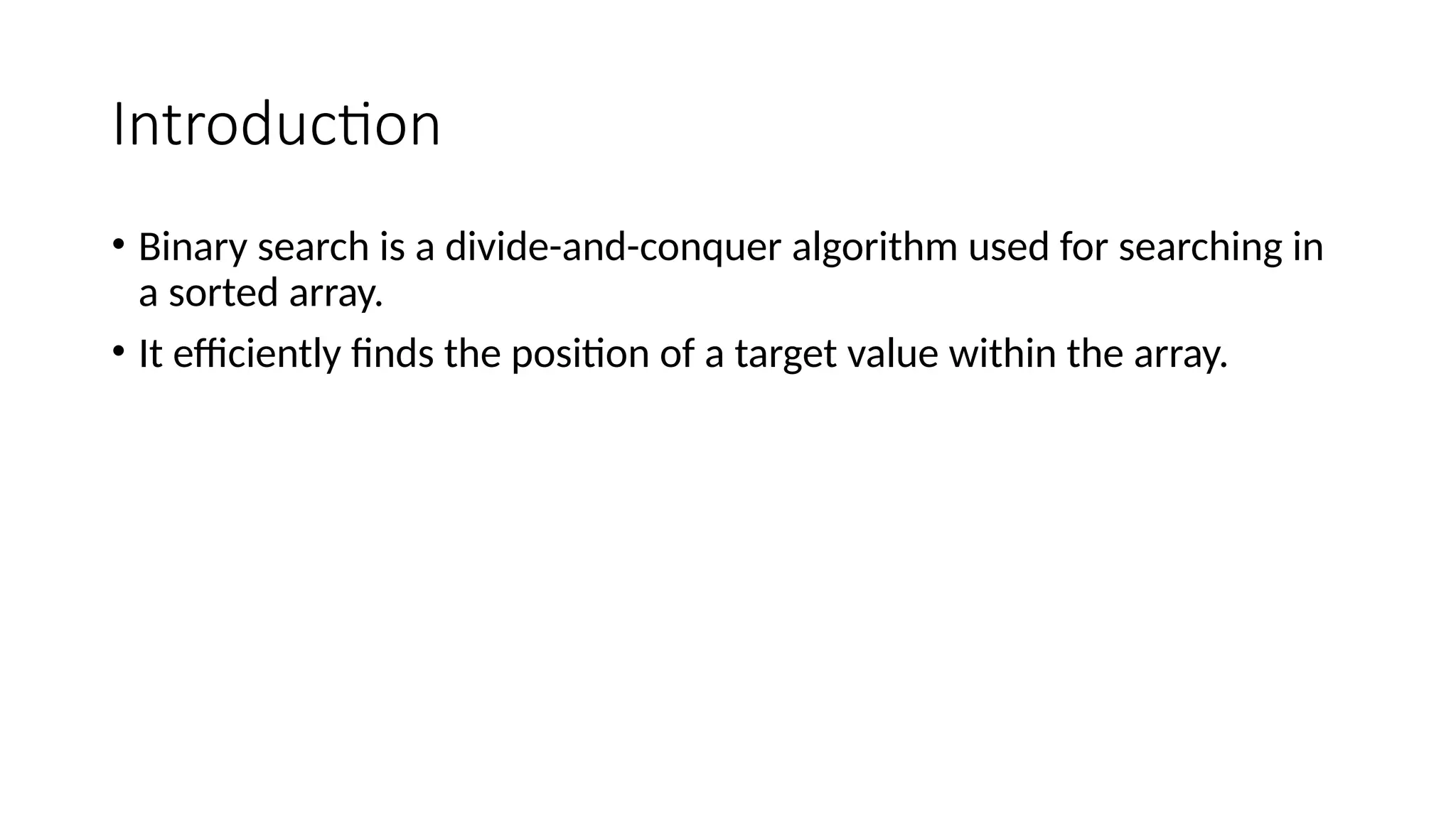
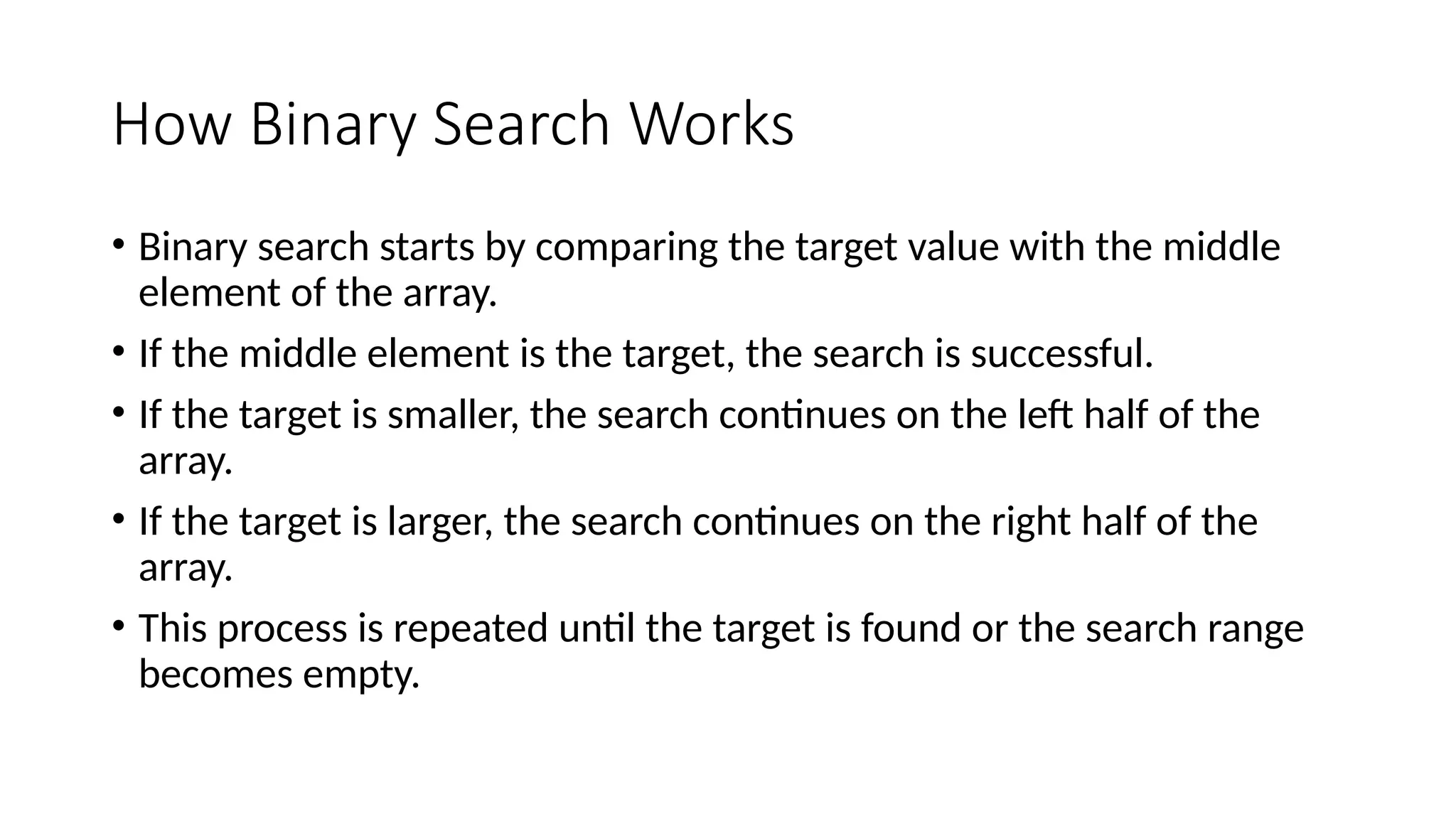
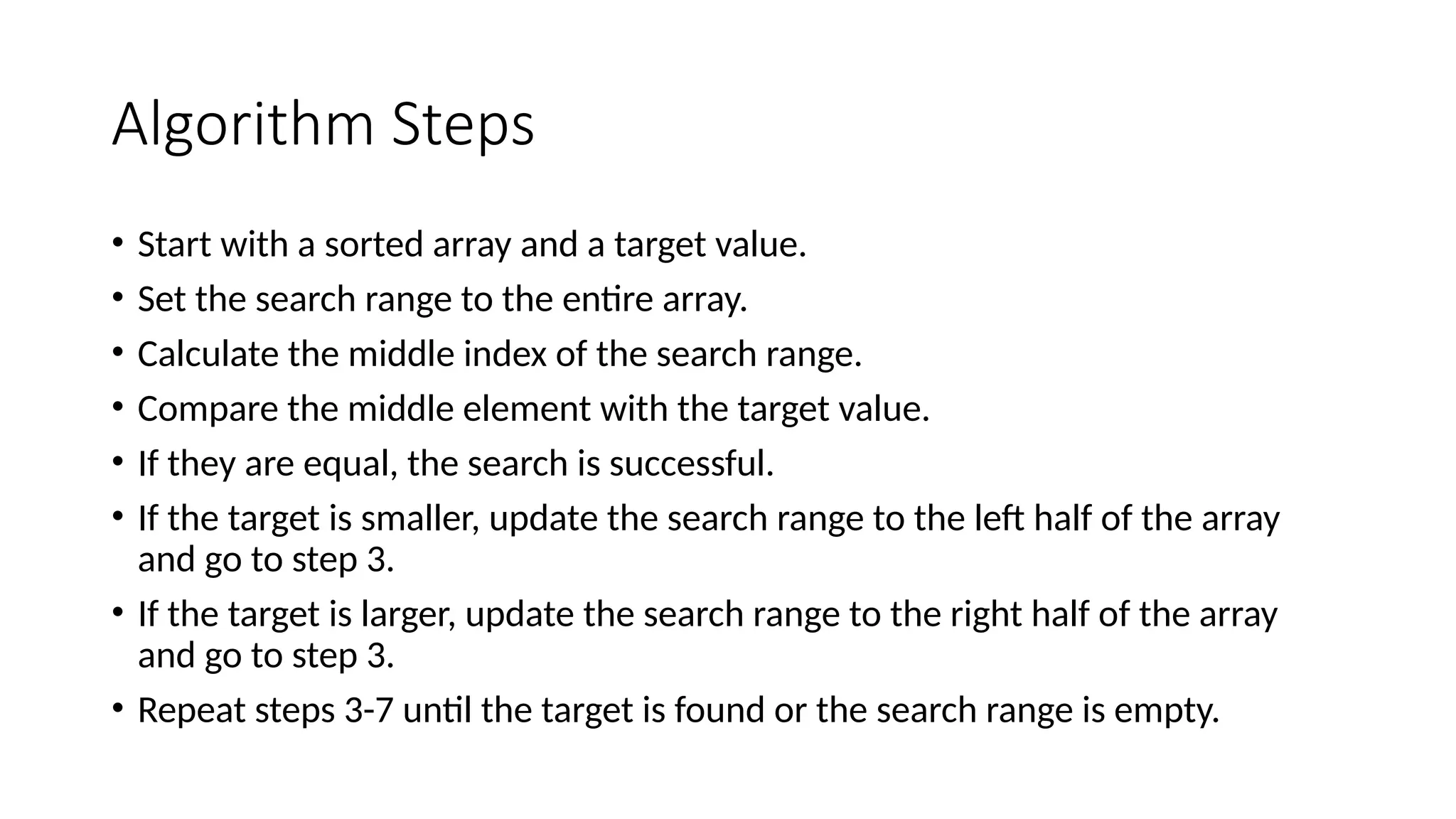
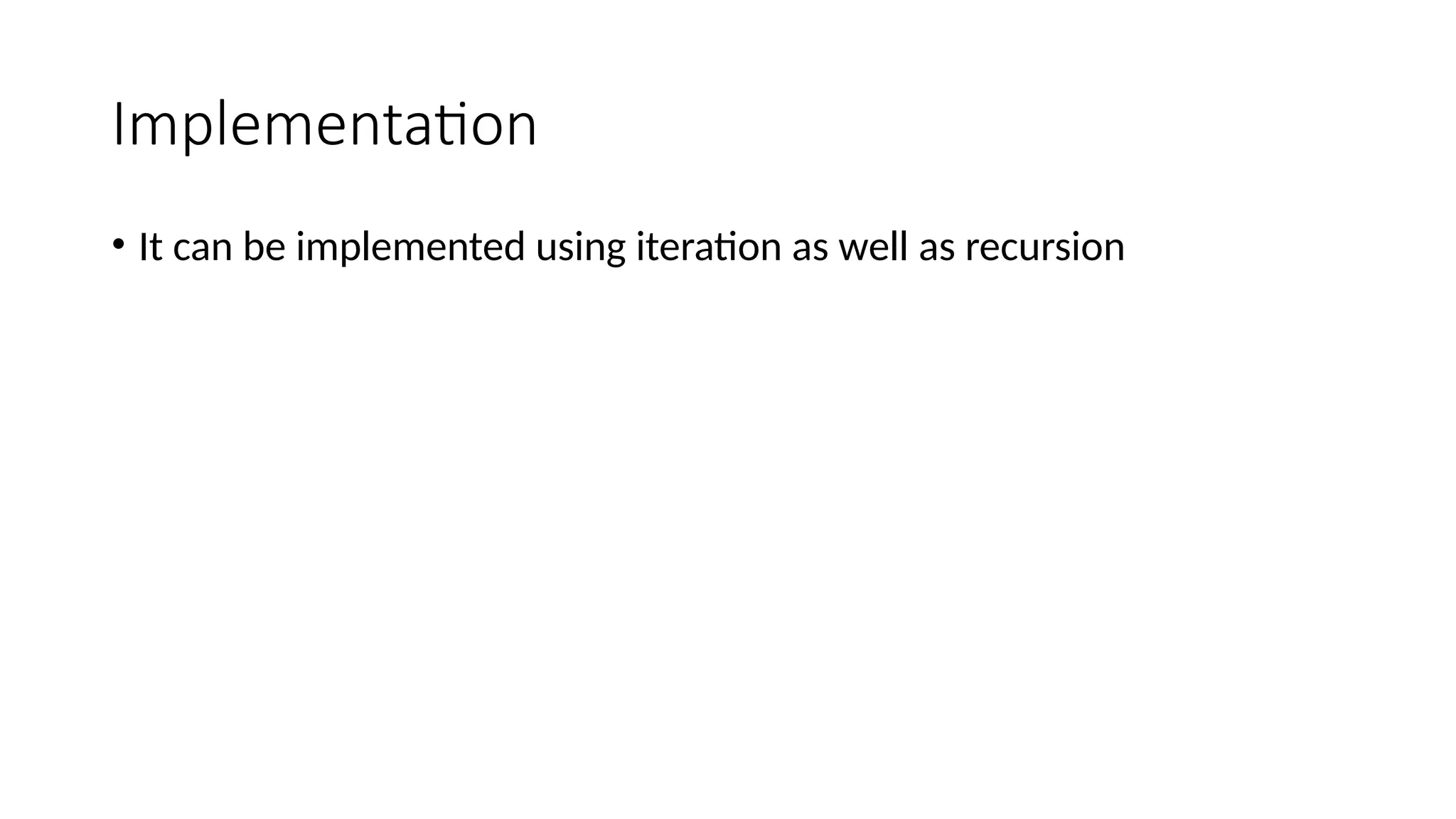
![Algorithm Steps
int binarySearch(int array[], int x, int start, int end) {
// Iterative Binary Search
// Repeat until the pointers start and end meet each other
while (start <= end) {
int mid = (start + start) / 2;
if (array[mid] == x)
return mid;](https://image.slidesharecdn.com/binarysearch-241112051349-0c14e8b1/75/an-Introduction-to-binary-search-algorithm-6-2048.jpg)
![Algorithm Steps
if (array[mid] < x)
start = mid + 1;
else
end = mid - 1;
}
return -1;
}](https://image.slidesharecdn.com/binarysearch-241112051349-0c14e8b1/75/an-Introduction-to-binary-search-algorithm-7-2048.jpg)
![Algorithm Steps
// Recursive Binary Search
int binarySearchRecursive(int arr[], int left, int right, int target) {
if (left <= right) {
int mid = left + (right - left) / 2;
if (arr[mid] == target)
return mid;
else if (arr[mid] > target)
return binarySearchRecursive(arr, left, mid - 1, target);
else
return binarySearchRecursive(arr, mid + 1, right, target);
}
return -1;
}](https://image.slidesharecdn.com/binarysearch-241112051349-0c14e8b1/75/an-Introduction-to-binary-search-algorithm-8-2048.jpg)
